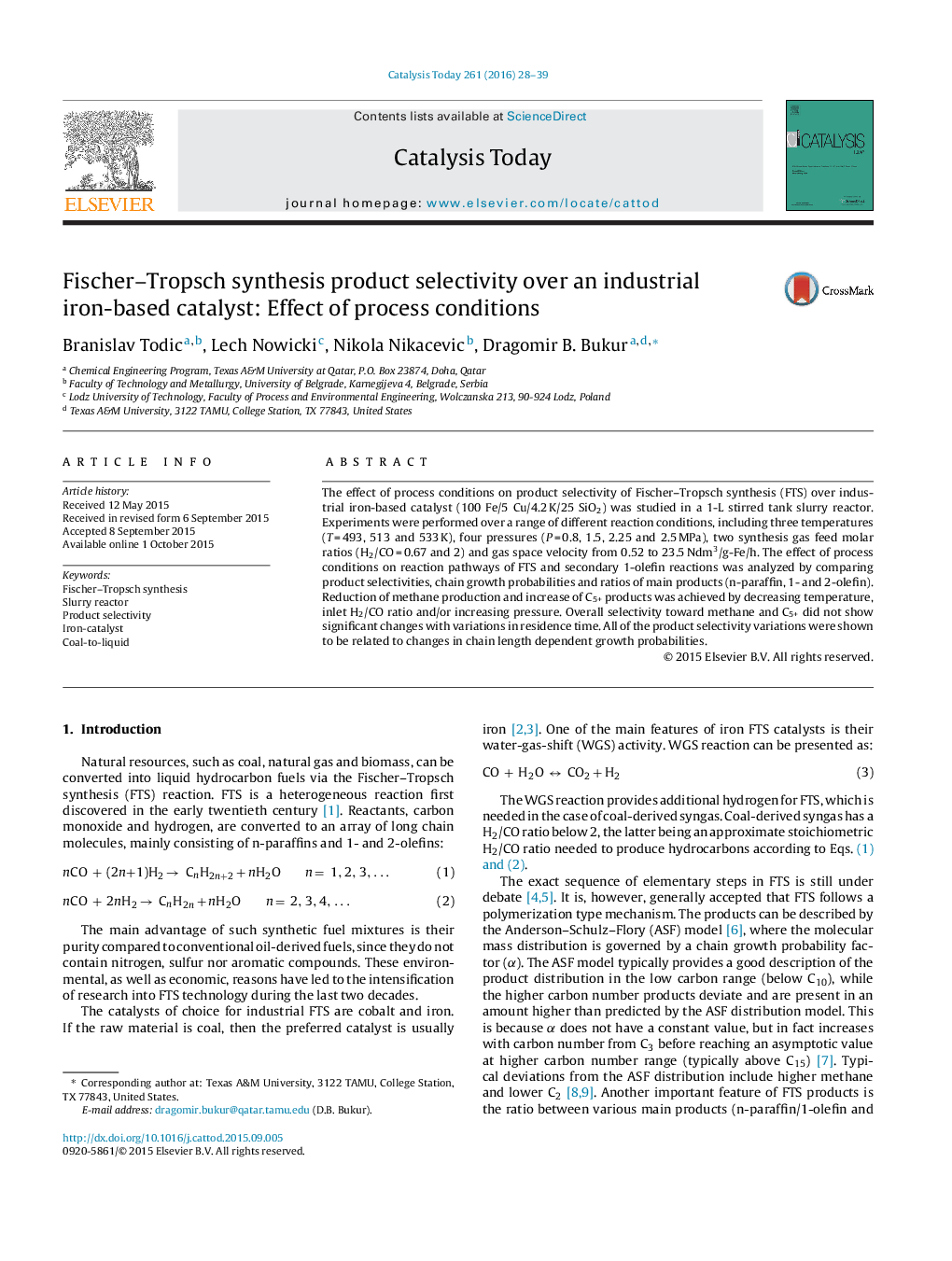| Article ID | Journal | Published Year | Pages | File Type |
|---|---|---|---|---|
| 53380 | Catalysis Today | 2016 | 12 Pages |
•Methane selectivity decreases with decrease in temperature and H2/CO feed ratio.•Space velocity and pressure have a small effect on hydrocarbon product distribution.•Oxygenates participate in secondary reactions.•Olefin content decreases with increase in residence time and H2/CO feed ratio.
The effect of process conditions on product selectivity of Fischer–Tropsch synthesis (FTS) over industrial iron-based catalyst (100 Fe/5 Cu/4.2 K/25 SiO2) was studied in a 1-L stirred tank slurry reactor. Experiments were performed over a range of different reaction conditions, including three temperatures (T = 493, 513 and 533 K), four pressures (P = 0.8, 1.5, 2.25 and 2.5 MPa), two synthesis gas feed molar ratios (H2/CO = 0.67 and 2) and gas space velocity from 0.52 to 23.5 Ndm3/g-Fe/h. The effect of process conditions on reaction pathways of FTS and secondary 1-olefin reactions was analyzed by comparing product selectivities, chain growth probabilities and ratios of main products (n-paraffin, 1- and 2-olefin). Reduction of methane production and increase of C5+ products was achieved by decreasing temperature, inlet H2/CO ratio and/or increasing pressure. Overall selectivity toward methane and C5+ did not show significant changes with variations in residence time. All of the product selectivity variations were shown to be related to changes in chain length dependent growth probabilities.
Graphical abstractComponent carbon number distribution.Figure optionsDownload full-size imageDownload high-quality image (74 K)Download as PowerPoint slide
